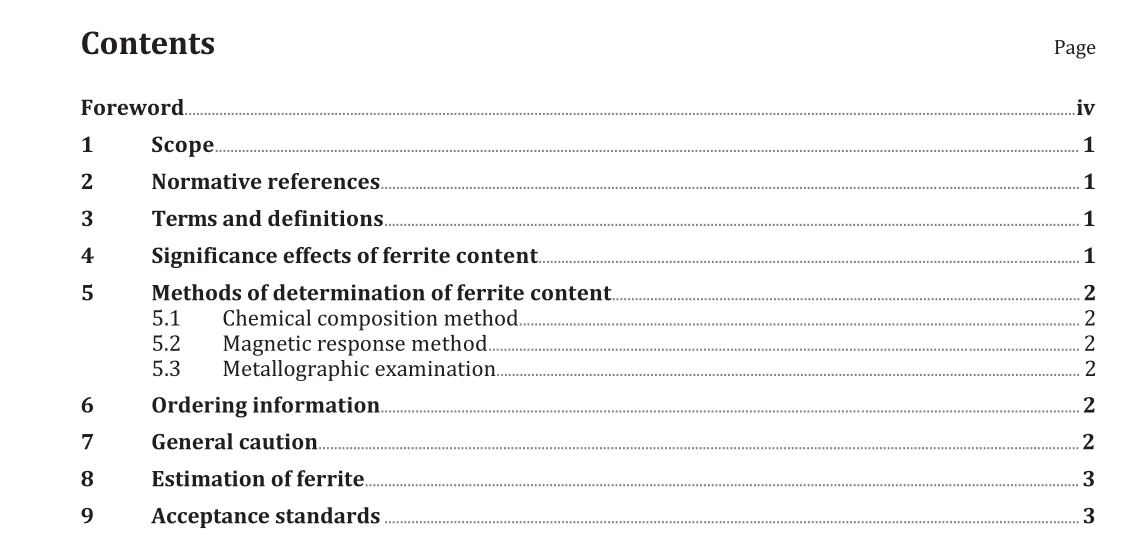BS ISO 13520:2015 pdf download.Determination of ferrite content in austenitic stainless steel castings
1 Scope
Procedures are covered for estimating ferrite content in certain grades of austenitic iron-chromium-nickel alloy castings that have compositions balanced to create the formation of ferrite as a second phase in amounts controlled within specified limits. Methods are described for estimating ferrite content by chemical, magnetic and metallographic means.
2 Normative references
The following documents, in whole or in part, are normatively referenced in this document and are indispensable for its application. For dated references, only the edition cited applies. For undated references, the latest edition of the referenced document (including any amendments) applies.
ISO 4990, Steel castings — General technical delivery requirements
ISO 9042, Steels — Manual point counting method for statistically estimating the volume fraction of a constituent with a point grid
ASTM A799, Standard Practice for Steel Castings, Stainless, Instrument Calibration, for Estimating Ferrite Content
BNIF 345, Evaluation de la teneur en ferrite dans les aciers inoxydables moulés austénitiques
3 Terms and definitions
For the purposes of this document, the following terms and definitions apply.
3.1 ferrite
ferromagnetic, body-centred cubic microstructural constituent of variable chemical composition in iron-chromium-nickel alloys
Note 1 to entry: Ferrite includes both delta and alpha species.
3.2 ferrite content
proportion of total volume of an iron-chromium-nickel alloy present as the ferrite phase
3.3 ferrite percentage
ferrite content expressed as a volume percent
4 Significance effects of ferrite content
The tensile and impact properties, the weldability, and the corrosion resistance of iron-chromium- nickel alloy castings may be influenced beneficially or detrimentally by the ratio of the amount of ferrite to the amount of austenite in the microstructure. The ferrite content may be limited by purchase order requirements or by the design construction codes governing the equipment in which castings will be used. The quantity of ferrite in the structure is fundamentally a function of the chemical composition of the alloy and its thermal history. Because of segregation, the chemical composition and, therefore, the ferrite content, may differ from point to point on a casting. Determination of the ferrite content by any of the procedures described in Clause 5 is subject to varying degrees of imprecision which shall be recognized in setting realistic limits on the range of ferrite content specified. Sources of error are described in 5.1 to 5.3.
5 Methods of determination of ferrite content
5.1 Chemical composition method
Deviations from the actual content of each element present in an alloy because of chemical analysis variance, although possibly minor in each case, can result in substantial difference in the ratio of total ferrite-promoting to total austenite-promoting elements. Therefore the precision of the ferrite content estimated from chemical composition depends on the accuracy of the chemical analysis procedure. The estimation of ferrite percent by means of the chemical composition offers the most useful and most common method of ferrite control during melting of the metal.
BS ISO 13520:2015 pdf download
